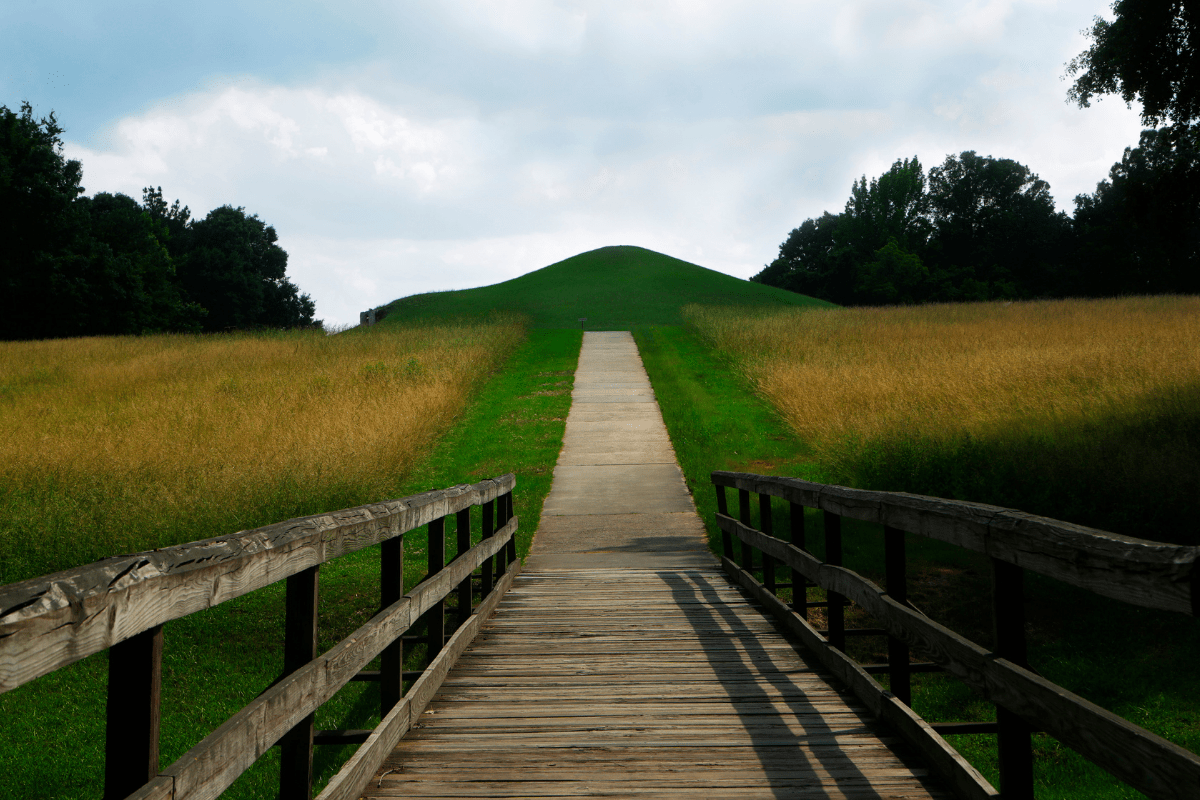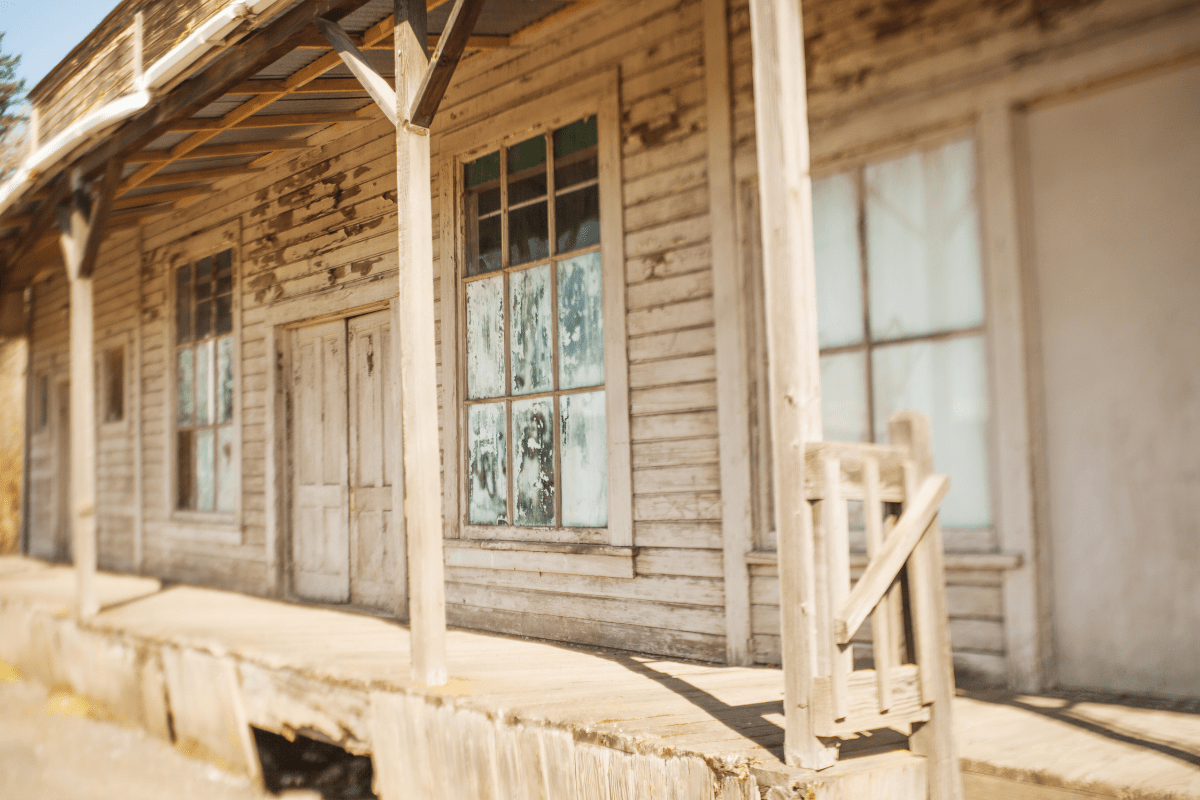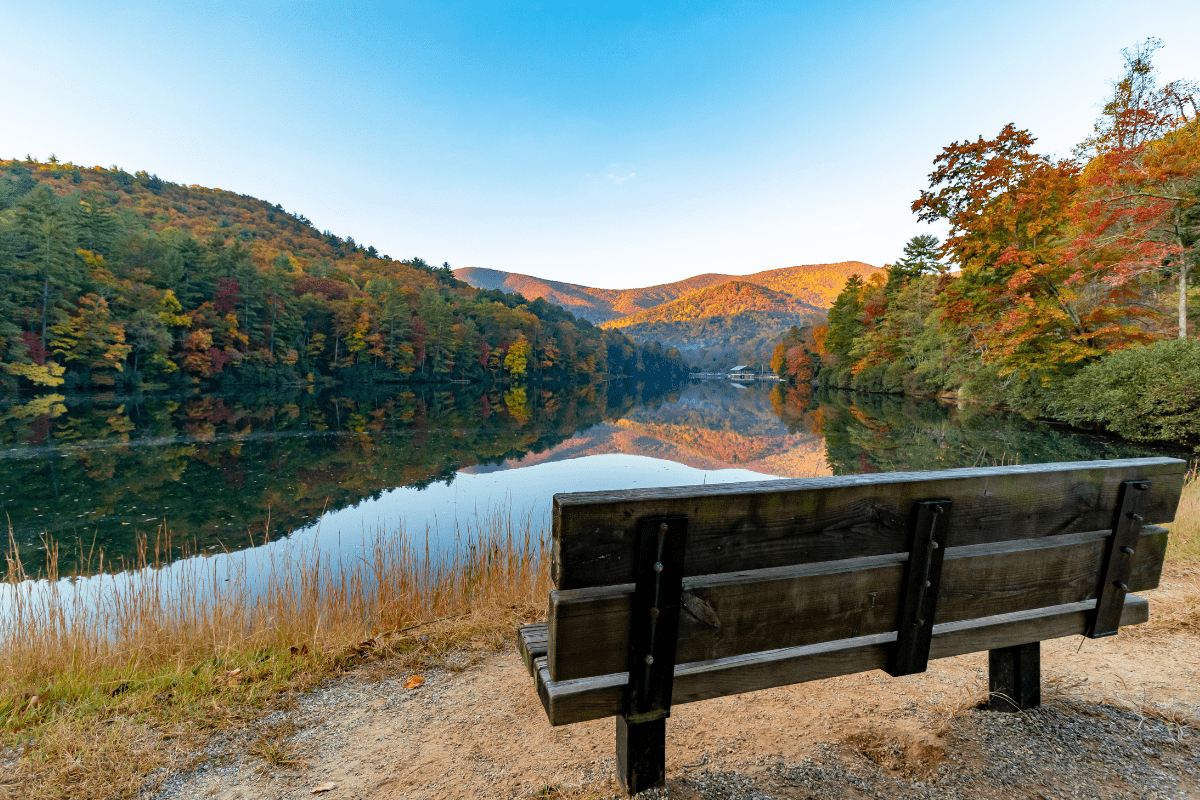Georgia's historic sites tell stories you won't find in your high school textbook. From ancient mounds that predate the pyramids to civil rights landmarks that changed America, the Peach State serves up 17,000 years of human drama across mountains, coastlines, and everything in between.
The civil rights sites that actually matter
Atlanta's Sweet Auburn district hits different when you're standing where Martin Luther King Jr. took his first steps. The MLK National Historical Park sprawls across 35 acres of preserved neighborhood, and yes, it's completely free to visit. The Birth Home is getting a makeover through November 2025, but park rangers still share stories about young MLK's childhood on these very streets.
The visitor center packs serious emotional punch with its "Courage to Lead" exhibits. You'll find yourself spending way more time here than planned, especially in the room recreating the Montgomery bus boycott. Historic Ebenezer Baptist Church, where three generations of Kings preached, still holds services… imagine sitting in those same pews.
Just next door, The King Center houses the world's largest collection of MLK documents and memorabilia. The reflecting pool surrounding Dr. and Mrs. King's marble crypt creates this unexpectedly peaceful moment in bustling Atlanta. Open daily from 10 AM to 5 PM with free admission, though donations help keep the eternal flame burning (literally).
Beyond the famous names
Oakland Cemetery might sound morbid, but this 1850 burial ground reads like a who's who of Atlanta history. Over 70,000 people rest here, including civil rights pioneers like Maynard Jackson, Atlanta's first Black mayor. The grounds stay open dawn to dusk for free, and during Black History Month, they run special "We Shall Overcome" tours at no charge.
Down in Albany, the Civil Rights Institute tells the story of the 1961-62 Albany Movement… the one that didn't quite work out as planned. MLK called it his biggest failure, but locals see it differently. The museum occupies the restored Old Mt. Zion Church where mass meetings happened, and for $8 admission, you get way more context than any documentary provides. Catch the Freedom Singers on second Saturdays if you can.
Ancient mounds that blow your mind
Ocmulgee Mounds in Macon deserves way more hype than it gets. We're talking 17,000 years of continuous human occupation on one site. The Great Temple Mound rises 55 feet with America's only known spiral mound design, built around 900-1000 CE by the Mississippian culture. Over 150,000 people visit annually, and admission? Totally free. TIME magazine just named it one of the World's Greatest Places 2025, and it's about to become Georgia's first national park.
The earth lodge here feels almost alien. You duck through this narrow passage into a circular chamber with the original 1,000-year-old floor still intact. The acoustics are insane… someone whispering on one side sounds like they're right next to you on the other.
More mounds worth the drive
Southwest Georgia's Kolomoki Mounds gets maybe a tenth of Ocmulgee's visitors, which means you'll probably have the place to yourself. The 56-foot temple mound stands as the tallest Woodland-period platform mound in the eastern U.S., dating from 350-750 CE. The museum's genuinely cool, with an excavated burial mound you view through a window. Just $5 for a park pass.
Up near Cartersville, Etowah Indian Mounds represents peak Mississippian culture from 1000-1550 AD. The 63-foot-tall mound has actual steps you can climb (your quads will thank you later). For $7, you get access to six mounds across 54 acres, plus a museum displaying artifacts that'll make you rethink "primitive" societies. Those copper plates? Pure artistry.
Civil War sites where stuff actually happened
Kennesaw Mountain claims the title of America's most visited Civil War battlefield, mainly because it's smack in metro Atlanta. The 2,965-acre park preserves where Sherman clashed with Johnston in June-July 1864 during the Atlanta Campaign. Free admission, but parking costs $5. On weekends, they run shuttles to the 1,808-foot summit for $1.50-$3.00, which beats the cardiac workout of hiking up.
The view from the top? Worth every penny. On clear days, you can see Atlanta's skyline where Sherman's army headed next. The park's 18 miles of trails range from "pleasant stroll" to "why did I wear jeans?"
The granddaddy of military parks
Chickamauga & Chattanooga became America's first national military park in 1890, and they've been perfecting the visitor experience ever since. The September 1863 Battle of Chickamauga saw some of the war's bloodiest fighting… historians call it the "death knell of the Confederacy."
The 7-mile auto tour takes you past hundreds of monuments and markers. Pro tip: Download the park app first. Those QR codes at each stop trigger augmented reality experiences that put you right in the battle. And yes, it's completely free to visit all 5,300 acres.
The sobering reality check
Andersonville National Historic Site hits hard. This Confederate prison camp killed nearly 13,000 Union soldiers through starvation, disease, and exposure. Today's site includes the National Prisoner of War Museum honoring all American POWs throughout history. The reconstructed prison walls and Providence Spring help visualize the horror, while the National Cemetery's 21,000+ white headstones drive home the cost of war. Free admission, but emotionally expensive.
Coastal forts that actually saw action
Fort Pulaski near Tybee Island changed warfare forever. Built with 25 million bricks between 1829-1847, this "impregnable" fortress fell in just 30 hours to newfangled rifled cannons in 1862. The $10 admission (ages 16+) gets you access to 5,000 acres including the fort and pristine salt marshes.
The damage from that 1862 bombardment? Still visible. You can literally put your hand through holes blasted by experimental James rifles. Weekend artillery demonstrations show why brick forts became obsolete overnight.
Fort Frederica on St. Simons Island tells Georgia's origin story. James Oglethorpe built this settlement in 1736 to keep Spanish Florida at bay. The town once housed 500 colonists before Spain's defeat at nearby Bloody Marsh in 1742 sealed Georgia's fate as British territory. Free admission to wander the archaeological ruins and imagine colonial life. The tabby construction (oyster shells, lime, and sand) has survived hurricanes that leveled modern buildings.
The Instagram fort
Let's be honest… Wormsloe Historic Site exists for the photos. The 1.5-mile avenue lined with 400+ live oaks draped in Spanish moss might be Georgia's most photographed spot. But beyond the Instagram bait, you'll find Georgia's oldest standing structure: tabby ruins from the 1740s.
Noble Jones arrived with Oglethorpe in 1733 and built this plantation along the Skidaway River. The $12 admission includes access to trails through maritime forest and weekend Colonial Faire demonstrations. Time your visit for late afternoon when golden light filters through the oak canopy.
Presidential hideaways and humble beginnings
FDR's Little White House in Warm Springs feels frozen in time. Roosevelt built this six-room cottage in 1932, seeking treatment in the naturally heated 88°F springs for his polio. He died here on April 12, 1945, while sitting for the "Unfinished Portrait" still displayed exactly where the artist left it.
Over 100,000 annual visitors pay $13 to see FDR's 1938 Ford convertible with hand controls, his collection of ship models, and the simple rooms where he found respite from Washington. The Historic Pools complex shows where Roosevelt exercised alongside other polio patients, pioneering accessibility long before the ADA.
Plains, Georgia, remains adorably unchanged since Jimmy Carter's childhood. The free Jimmy Carter National Historical Park includes multiple sites:
- His boyhood farm in Archery
- Plains High School (both Carters studied here)
- The 1888 depot campaign headquarters
- Carter Gardens with recent grave sites
The whole town feels like a time capsule, complete with Billy Carter's gas station turned museum.
Cherokee heritage in the mountains
New Echota near Calhoun served as the Cherokee Nation's capital from 1825-1838. This is where the controversial Treaty of New Echota was signed, triggering the Trail of Tears. The 200-acre site includes 12 original and reconstructed buildings for $7 admission.
The Cherokee Phoenix print shop produced America's first Indian-language newspaper here. Standing in the reconstructed council house where Cherokee leaders debated their nation's fate… it's heavy stuff. The museum contextualizes the forced removal without sugarcoating the betrayal.
The Chief Vann House in Chatsworth showcases Cherokee wealth and sophistication. Built in 1804, this brick mansion features a "floating" cantilevered staircase that still amazes engineers. Fire damage from the family's 1835 forced removal remains visible. Tours run hourly for $7, except winter Sundays when they probably need a break too.
Gold fever strikes Georgia
The Dahlonega Gold Museum occupies the 1836 courthouse right on Dahlonega's charming square. America's first major gold rush started here in 1828, two decades before California's. The museum displays a complete set of rare Dahlonega gold coins and a 5+ ounce nugget that'll make your wedding ring look tiny.
Here's a fun detail: the building's bricks contain trace amounts of gold. Admission costs $8.50, but there's no elevator to the second floor, so mobility-impaired visitors miss half the exhibits. Someone should fix that.
The weird and wonderful hidden gems
Providence Canyon State Park earned its nickname "Georgia's Little Grand Canyon," though it's really more like Georgia's Beautiful Mistake. Poor farming practices in the 1800s created 16 canyons up to 150 feet deep, exposing 43 different colors of soil in the walls. Just $5 for parking gets you access to rim trails and canyon floor hikes.
The park left some 1950s vehicles in place because removing them would cause more environmental damage than leaving them to rust. Nature's slowly reclaiming these old trucks in the most photogenic way possible. July and August bring blooms from rare plumleaf azaleas found nowhere else in Georgia.
Where millionaires went to play
Jekyll Island Historic District preserves the Gilded Age playground where families controlling one-sixth of the world's wealth spent winters. The Rockefellers, Vanderbilts, Morgans, and other surnames from Monopoly boards built "cottages" that redefined understatement.
Today's 240-acre National Historic Landmark contains 34 historic structures. The $20 trolley tours include museum and chapel access, plus stories about the secret 1910 meeting that created the Federal Reserve. Yes, really.
Madison earned its nickname "The Town Sherman Refused to Burn" through Senator Joshua Hill's Union sympathies. Located 60 miles east of Atlanta off I-20, the town preserves nearly 100 antebellum homes. Self-guided walking tours pass Greek Revival mansions, but the real star is Rose Cottage, built by formerly enslaved woman Adeline Rose in 1891. Her story deserves its own movie.
Actually useful planning stuff
When to go (because timing matters)
Spring (March-May) brings perfect weather and azalea blooms to coastal sites. Fall (September-November) paints North Georgia mountains in ridiculous colors while temperatures stay comfortable. Summer turns most of Georgia into a sauna, making indoor attractions way more appealing. Winter means reduced hours at some sites but fewer crowds everywhere.
Getting around (spoiler: you need a car)
Atlanta's civil rights sites connect via MARTA, with King Memorial Station serving the MLK area. Savannah offers a free DOT shuttle around downtown, plus a $3/day streetcar. Everything else? You're driving. Rural sites like Providence Canyon sit 45-90 minutes from civilization.
Parking usually runs free except Kennesaw Mountain's $5 fee. GPS works fine for major sites, but download offline maps for places like Kolomoki Mounds where cell service goes to die.
Budget hacks that actually work
- Georgia State Parks annual pass: $50 covers every state historic site
- Free sites include all National Park locations
- Group rates kick in at 15+ people
- Combination tickets save money at clustered attractions
- Senior/military/student discounts widely available
Photo tips from someone who learned the hard way
Most sites allow non-flash photography outdoors. Historic house interiors often ban cameras entirely during tours (they're not being mean, flash damages artifacts). Best photo spots:
- Wormsloe's oak avenue (afternoon light)
- Providence Canyon rim (sunrise or sunset)
- Forsyth Park fountain (early morning)
- Fort Pulaski moat reflections
- Kennesaw Mountain summit (clear days only)
Commercial photography requires permits everywhere. They will find you. They will fine you.
Making it educational (even for teenagers)
Junior ranger programs at National Park sites work for kids up to about 12. Weekend living history demonstrations bring sites alive… nothing beats seeing musket drills at Fort Frederica or gold panning at Dahlonega. The National Infantry Museum in Columbus offers 190,000 square feet of military history with surprisingly engaging interactive exhibits. Free admission makes it a no-brainer rainy day option.
Book school groups way in advance, especially for popular sites during spring field trip season. Most sites offer educator resources and pre-visit materials that actually help.
Georgia's historic sites deliver way more than dusty museums and boring plaques. These places shaped America, from ancient civilizations through civil rights. Whether you're climbing prehistoric mounds, walking battlefields, or standing where Dr. King was born, you're experiencing the actual places where history happened. Just remember to bring water, wear comfortable shoes, and prepare for your perspective to shift a little.





